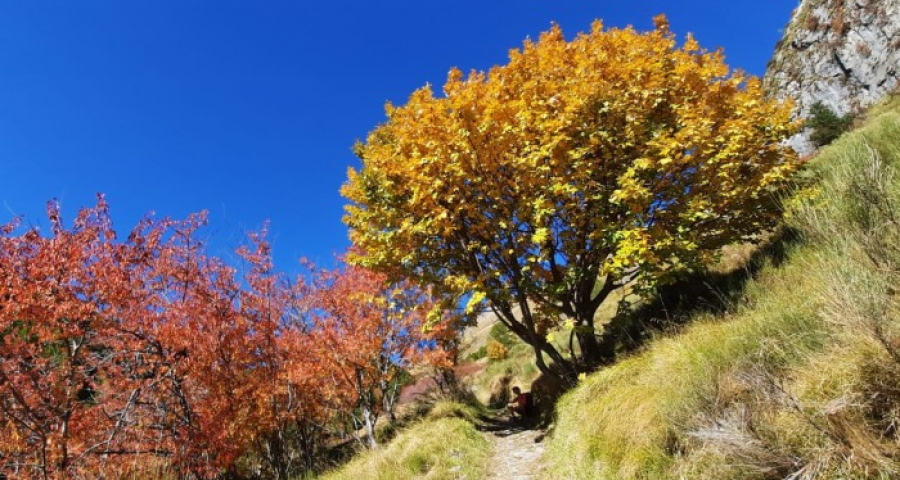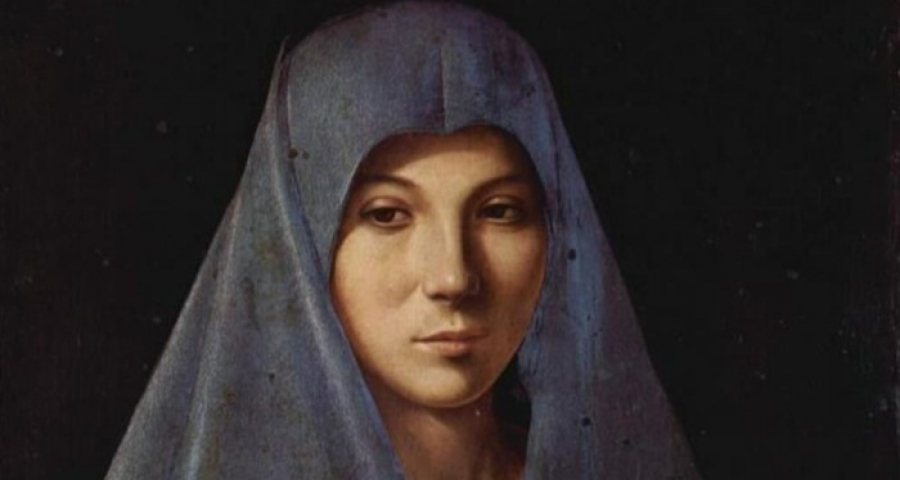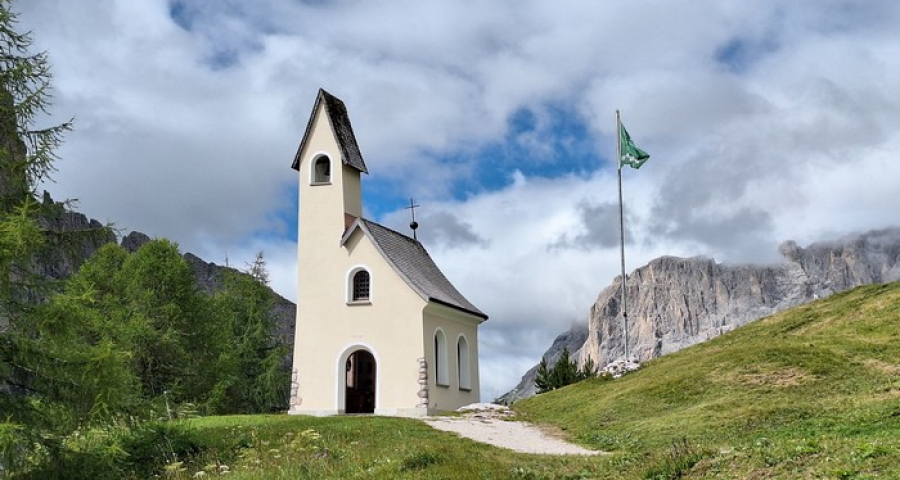Narrative Economy/4 - An honourable and respectful look at the spirituality of southern peasants in the 1900s masterpiece novel
by Luigino Bruni
published in Avvenire on 03/11/2024
“From the exile experiences of another anti-fascist, Levi, Christ Stopped at Eboli was born, which is intended to be and is the work of a literary man, but to which we all owe something more than just a literary suggestion.”
Ernesto de Martino, The Land of Remorse, 1961, p. 28
With Christ Stopped at Eboli Carlo Levi reveals to us the soul of the Lucanian people, and takes us inside their religiosity, perhaps more Christian than Levi thought.
“Cristo si è fermato ad Eboli" (Christ Stopped at Eboli) is part of the moral consciousness of the second Italian and European twentieth century. Carlo Levi and Ignazio Silone showed us a popular soul of Meridian, peasant and poor Italy much more complex and richer than how the early modern and Enlightenment historians had described it, for whom those Italian peasants were simply 'pagans,' very similar if not identical to the pre-Christian inhabitants of Magna Graecia; as if Christianity had never passed through those rural lands of the South, which, because of little or no Christian culture, had already been called the 'Indies of Italy' by the Jesuits of the 1600s. Christ had not only stopped at Eboli: he had never left Rome's Aurelian walls, seminaries and theological treatises.
Christ Stopped at Eboli is set between Grassano and Aliano (called Gagliano in the book), two towns in the province of Matera. The religious theme in its relationship with magic is an essential element of the novel: "In the other world of the peasants, where one does not enter without a key to magic" (Cristo si è fermato ad Eboli, Einaudi, 1947, p. 20). This summer I spent a few days in those two towns, to breathe in their spirit, and there, between readings and a pilgrimage on foot to Our Lady of Viggiano, I decided to write these few articles on Carlo Levi's Cristo. Levi's presence is still very much alive in those lands, revealing to us that sublime ability that literature has to change the history and geography of places while revealing to us their deep soul. The world changes every day as we try to tell its story.
Levi's Cristo is many things. At first glance, it is an autobiographical novel, a kind of anthropological and social diary written between 1943 and 1944 in Florence, which recounts the period of confinement in Lucania (1935-1936) of the anti-fascist Carlo Levi, painter, doctor, political activist and writer. The novel is also a denunciation of the inhumane condition of the undernourished and malarial inhabitants and children of Matera, which would emerge in all its dramatic force after the war, thanks in part to Levi, and to Silone. But his most beautiful pages are still others. They are the descriptions of the feelings of the poor people, of their many fears, of the moral pettiness of all fascism and all censure, of the religious and magical sense of a popular and peasant world of which a true and living reminder survives. But Cristo is above all a book written with wonderful prose, one of the happiest books in our literature. Levi was a painter, even when he writes he paints; he uses his pen to draw landscapes and small details, faces of men, of women, of children, of the poor.
'Christ' is not only the first word of one of the most ingenious titles in the history of literature; it is also one of the novel's central protagonists, a protagonist in its absence: 'We are not Christians,' they say, - Christ Stopped at Eboli. 'Christian' means, in their language, man... We are not Christians, we are not considered as men, but beasts, beasts of burden, and even less than beasts." And then he specifies, "But the phrase has a much deeper meaning, which, as always in symbolic ways, is the literal one. Christ really stopped at Eboli, where the road and the train leave the coast of Salerno and the sea, and enter the desolate lands of Lucania. Christ never came this far" (pp. 9-10).
For Levi, Christ and his different faith are not to be found in those lands, they did not descend there; instead, in their place was magic, witchcraft, monachicchi (the mischievous spirits of children who died without baptism), the dead: "For the old man, the bones, the dead, the animals and devils were familiar things, linked, as they are after all, here, for everyone, to simple everyday life - The country is made of the bones of the dead," he told me in his dark jargon, bubbling like underground water suddenly coming out between stones" (p. 67). There were also some saints and the Madonna of Viggiano who, however, had, for Levi, very little or nothing Christian about them: "The Madonna of Viggiano was, here, the fierce, ruthless, dark archaic goddess of the earth" (p. 113).
The vision Levi gives us of the peasants of Basilicata is similar to, but also different from, that of Ernesto de Martino, which emerged from his ethno-anthropological studies of Lucania and the South, conducted in roughly the same years as Levi. De Martino, too, showed us "a panorama that at first glance is extremely disjointed, contradictory ... and yet, on closer examination, [reveals] the unitary theme that holds together such heterogeneous elements, namely the people's demand for psychological protection" (Sud e Magia, 1959, pp. 8-9). For de Martino between popular Catholic religion and magic there realized a mutual contamination, although the dominant element remained magic, which was much more deeply rooted, popular, widespread than the Christian faith that had arrived in the South from outside, from above and speaking an incomprehensible language. De Martino was then convinced that a certain element of magic was intrinsic to Catholicism itself: "From the extra-canonical exorcism of sorcerers and sorceresses we pass to the exorcisms of the missal (blessing of water, salt, prayer against Satan and other evil spirits at the end of Mass etc.), the pontifical, the Roman ritual ..., the medals of St. Benedict and above all the exorcisms" (p. 120). For De Martino then, secular and communist, and unlike Levi, something of Christ and Christianity had descended beneath Eboli, forming a part, perhaps not the most important part, of the mestizo religion of those peoples. Even further from Levi in those same years Don Giuseppe de Luca, one of the greatest intellectuals of the 20th century and a great historian of popular piety, had gone even further, telling us of a faith of the Catholic people that was certainly mestizo but also Christian, although theirs was a Christianity different from those of theological treatises and catechisms (Introduction to the History of Piety, 1951). For De Luca, too, the piety of the Meridian and peasant people was a mestizo of Christianity and other things. Christianity mixed, impure, contaminated, but still Christianity.
In the world described by Levi, not so different from that of my grandparents, there were spirits, saints, lots of dead people, everything was shrouded in a certain spiritual atmosphere that was more negative and fearful than positive and reassuring; a constant supernatural presence made up of archaic elements, a lot of magic and some Christian graft soon absorbed from the ancient animist humus. We cannot deny it. Christian Europe, medieval and pre-modern Christianitas was, in fact, mainly the product of the imagination of theologians and ecclesiastics who confused the faith of urban elites and aristocratic households with that of all Christian people. In reality, in the countryside, in the mountains, the poor and illiterate lived in an expectation of the messiah very similar to that of the biblical people, which still continues. Yet in spite of all this, Christ overcame Eboli, reached those peasant and magical peoples, who really encountered him within the Latin prayers rewritten in dialect, in the statues of saints bathed in tears, in the sermons of itinerant missionaries, even in Don Trajella's wacky one for Christmas Eve. Christianity was not the mass of our people's faith, but a tiny grain of its leaven leavened it, and continues to leaven it.
The Christian religion had stopped and Eboli, or long before, but Christ had not: he had come down as far as Basilicata and Sicily, mingled and covered himself with many other things in order to penetrate more gently inside the lives of the people, and there he remained. Those magical peasant people thus really met Christ, a popular, dialectal, childlike Christ, disguised in traditional and folkloric clothing; but Christ was there, in Gagliano, within the loves and especially the sorrows of the poor, the men and especially the women, for whom the hugs and kisses to the statues of the saints and the madonna were the few moments of tenderness and beauty in a world that for them was almost always one of servitude. Illiterate women, part Christian and part witch, all beautiful, some masterfully described even in Levi's Christ; women of the people, bewitched by evil spells and magical filters, but who were able to cherish the sense of a true presence of the spirit on earth. With the same faith as the shepherds in the crib, the Syro-Phoenician woman and the hemorrhagic woman, that of Magdalene, Martha, and Mary. Faiths theologically imperfect, popular, made of tears, flesh and bodies, but true.
Carlo Levi did not see this Christian pietas in Lucania. He did not see it because he did not look for it. He was not interested in it. But he found something else, no less interesting. The pearl of Levi's Cristo is the gaze of its author. A good and never judgmental look at the lives of the peasants he encountered. Although a child of another world (that of science) and part of another religious universe (he was secular and from a well-to-do Jewish family in Turin), Levi does not make value judgments about the moral condition of his protagonists: he records their passions, their gestures, their beliefs, their great desperate pains, but he never judges them. She does not judge her maid, Giulia, who had 17 children with as many men, nor the exorcisms of the other 'witches,' nor Don Trajella, a parish priest confined to Gagliano, a drunkard and miser. On the contrary, here and there, he even goes so far as to express positive words about those magical methods of 'managing' the diseases and malaise of life, even revealing a certain skepticism toward the positivist science of his time that treated all popular knowledge as superstition to be eliminated: "Reason and science can take on the same magical character as vulgar magic...Therefore I respected the abracadabras, honored their antiquity and obscure, mysterious simplicity, preferred to be their ally than their enemy, and the peasants were grateful." Not least because, Levi added, "most of the prescriptions would be enough to heal the sick, if, without being shipped, they were hung around the neck with a string, like an abracadabra" (p. 215). Respect and honor then; one does not enter the peasant world 'without a key to magic,' certainly; but one does not enter their mystery without 'respecting and honoring them.'
Levi wrote pages about the peasants that still move us, because he honored and respected them, because he left his affluent bourgeois condition and went down under the rich man's table, in the company of Lazarus: and from there, from below, he saw different vistas. In this ethical and spiritual exercise his condition as a confined person helped him, that political and civil poverty of his gave him a genuine fraternity with the natural poverty of the peasants. And from this meeting of different people made equal by misfortune, the masterpiece was born.













